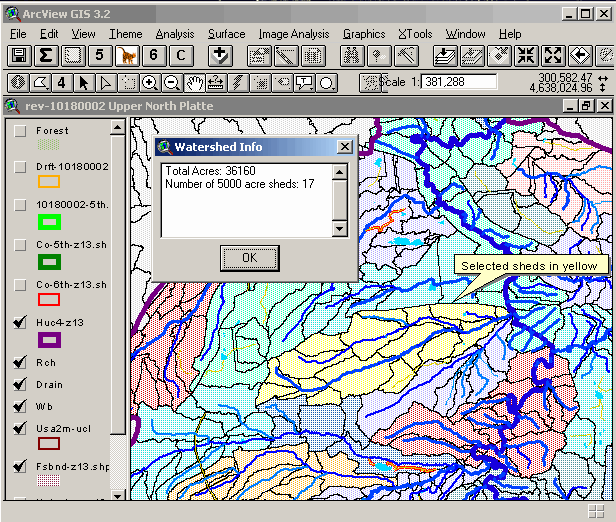

Use the following reference for this page or the data accessed from this page:

The numbers on Greenland are the drainage subsystem IDs. The axes are labeled with our 50-km polar-stereographic grid coordinates.

We do not provide a Greenland surface type mask because it is available at source (Ekholm, 1996).įigure 3. Greenland drainage divides.
#Xtools watershed slopes full
Full Antarctic drainage divides (including floating ice).The following links access files available for download: Orange: ice shelfįor Antarctica, we also have images of the drainage divides overlaid on Mosaic of Antarctica maps (Haran et al., 2005) and on an ice velocity map (Rignot et al., 2011) available for download. Figure 2 is a map of the surface types (the 1 km point-by-point drainage system map is indistinguishable from Figure 1).įigure 2. Surface type map. The final grids give the surface specification (continent, ice shelf, or island/ice rise), and the drainage system (1-27) for each 1 km grid cell. Floating ice is the rest of the area between the MODIS grounding line and our modified MODIS coastline it includes both glacier tongues and ice shelves. Islands and ice rises are defined by the MODIS island polygons the surfaces may or may not be ice-covered. By continental, we mean the region inside the MODIS grounding line within this region we have no way to distinguish between ice-covered surfaces and other surfaces. The portions between the grounding line and the coastline are hatched.įrom the Antarctic drainage system boundaries, we generated two 1-km polar-stereographic grids: a grid giving the drainage system for each cell, and a grid giving the surface type (continental, floating, or island/ice rise). The portions of the drainage systems within the grounding line are filled with solid color. The numbers on Antarctica are the drainage system IDs. The drainage systems include all basins and sub-basins in each, and due to sporadic ice shelf advance and break-back, are drawn to prominent points on the coastline (e.g., between systems 8 and 9), not to specific junction points of coastline, ice front, or grounding line users should make adjustments to the area and other statistics that would be affected if different junction points are selected.įigure 1. Antarctic drainage systems. The parts of the Ronne and Filchner ice shelves in systems 2 and 3, and the western part of the Ross Ice Shelf in system 17, are implicitly allocated to East Antarctica. Our definitions of the West Antarctic ice sheet (systems 18-23 and 1), the East Antarctic ice sheet (systems 2-17), and the Antarctic Peninsula (systems 24-27) allocate the drainage systems according to ice provenance with separation of East and West Antarctica approximately along the Transantarctic Mountains. Antarctic Drainage System Boundaries and Masksįigure 1 shows the Antarctic drainage divides developed by the Goddard Ice Altimetry Group from ICESat data.


 0 kommentar(er)
0 kommentar(er)
